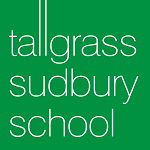As a Sudbury staff member, I think self-directed education far surpasses the experience most students have a conventional schools. But life at Tallgrass isn’t perfect. After a decade of experience at Tallgrass, here are some of the pluses and minuses I see of self-directed education at a Sudbury school.
The Pros of Sudbury Schools
Student Experience: Students at Tallgrass will tell you they like going to school, and many are excited to get up in the morning. They may even be sad for snow days or summer break. In our culture, negativity about school is so common that we learn to ignore comments like “I hate school,” or “The only thing I like is lunch.” But life is not supposed to feel as wrong as school feels for many students. Challenges and struggles are important, but there should be an underlying “rightness” about how we spend most of our time.
Deep and Important Learning: Young people tend to “get” this model of education more easily than adults do. They understand that they’re learning, whether it looks like school or not. They’re simply living life, and learning is part of that. Younger kids are thrilled to be able to play all day, and older kids appreciate being able to talk as much as they want. Their curiosity and interests generally point them in the right direction. Time after time, I see students drawn to things that challenge them and address their weaknesses. Students who are particularly socially awkward will often end up spending most of their time with others, struggling through attempts at conversation and friendship. Students who think they’re bad at math are often the first ones to join a math class.
Community: In our society, true communities are rarer and rarer. Sudbury schools teach students how to be part of a community, one that they have a real hand in creating. We make rules together and make decisions about how to spend money and how to handle problems. Because there is no separation of ages, students learn how to relate to those older and younger than them. We learn by making mistakes as a community and by figuring out solutions. Getting along with other people is one of the hardest lessons in life--and one of the ones that takes the most time. At Tallgrass, they have all the time in the world to practice.
Outcomes: In the long term, self-directed education creates the kind of outcomes we really care about: adults who are kind and empathetic, who can handle conflict, take charge of their own decisions, and advocate for themselves. Our graduates have great concrete outcomes, too. Sudbury students go to college at higher rates than the general population, and end up in a variety of careers, divided fairly equally between STEM-related careers and those that are more humanities-focused. The main difference between self-directed students and their peers seems to be that more of them take entrepreneurial or self-employed paths.
The Cons of Sudbury Schools
There are also real downsides to a Sudbury education.
Explaining it to Others: Many parents and students struggle with trying to explain and justify self-directed education to those around them. Though self-directed education is the most natural thing in the world, it can be hard to let go of ideas like “You need a teacher in order to learn” or “What is a 12-year-old supposed to be learning?” Adult unschoolers consistently mention this as one of the biggest downsides--that even though they are happy with their education, and are able to achieve the things they want to achieve, they get tired of having to explain their unconventional background to everyone from family members to acquaintances.
Lack of Evaluation: For some parents (and students), the lack of evaluation can be a real struggle. The lack of evaluation is also important, because we know that extrinsic motivation (motivation through things like grades, punishments, and rewards) destroys intrinsic motivation: doing something for the love of it or because you think it’s important. At a Sudbury school, there are no guarantees that your child will be successful. The evaluation in most schools creates the illusion of guarantee, even if we know deep down that As and honor roll accolades don’t necessarily reflect who our child is or what their futures will be.
Learning Different Things: Some parents worry about exposure. In a vibrant community like a Sudbury school, students are exposed to new things all the time. But it’s true that students do not get exposed to the same things at the same time as students in conventional school. They learn the basics, because those things are important parts of being a person in our culture, and then they learn a lot more, but those things probably won’t match up exactly with a public school curriculum.
Taking Responsibility for Yourself: Finally, being a student at Sudbury school is hard. Being responsible for yourself is hard, and life is hard! Figuring out what you want to do and how is one of life’s biggest challenges, but it’s also one that, ultimately, can’t be avoided. The more practice kids have making these choices in a supportive environment, the better they’re able to transition to a happy and productive adulthood.
At Tallgrass, we think the pros far outweigh the cons. If you agree and want to explore a Sudbury education for your family, contact us today.



